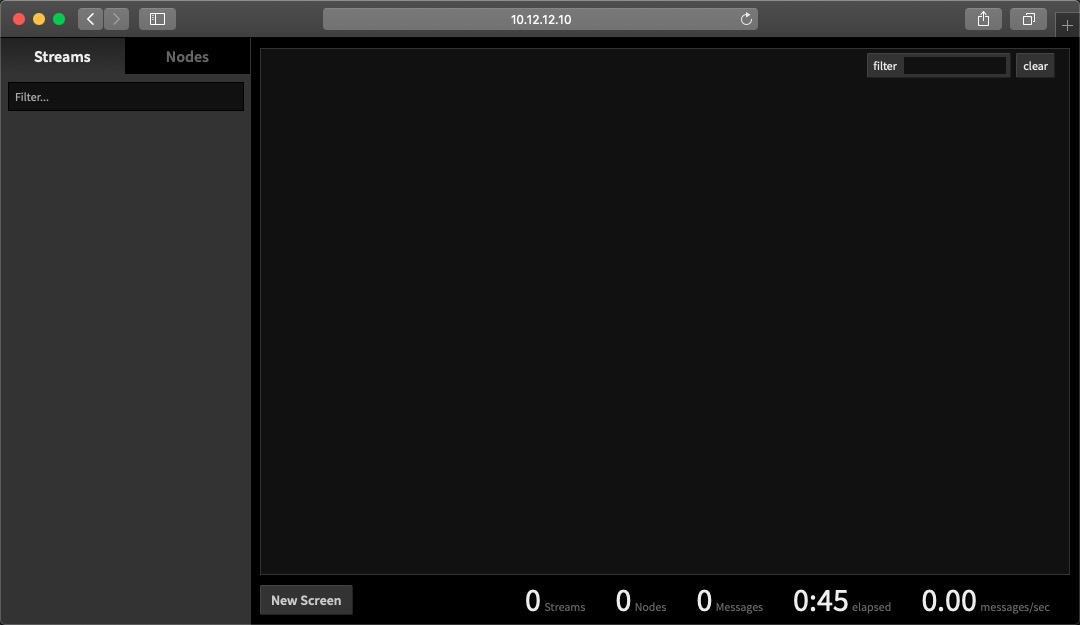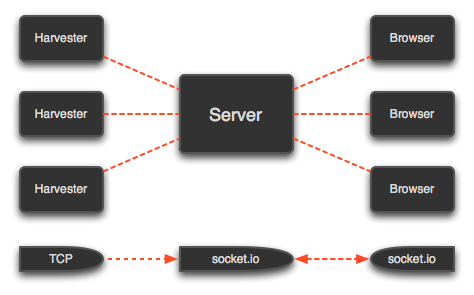logio
log.io
Real-time log monitoring in your browser.
How does it work
Harvesters watch log files for changes, send new log messages to the server, which broadcasts to web clients. Log messages are tagged with stream, node, and log level information based on user configuration.
Log.io has no persistence layer. Harvesters are informed of file changes via inotify, and log messages hop from harvester to server to web client via TCP and socket.io, respectively.
Activate streams & nodes to watch log messages
Simple TCP interface
Log.io uses a stateless TCP API to receive log messages.
Writing a third party harvester is easy. Open a TCP connection to the > server and begin writing properly formatted messages to the socket.
Read the API documentation.
Send a log message
1 | +log|my_stream|my_node|info|this is log message\r\n |
Register a new node, with stream associations
1 | +node|my_node|my_stream1,my_stream2\r\n |
Remove a node
1 | -node|my_node\r\n |
Install Log.io
The original project NarrativeScience/Log.io has been unavailable due to lack of maintenance for a long time.
Fortunately, the blacklabelops-legacy/logio can also be used.
So we can install the project like this:
Install and start docker
The docs.docker.com is very detailed.
Support Cloud、 MacOS 、Linux 、 Windows
Pull image
1 | $ docker pull blacklabelops/logio |
Start the server
1 | $ docker run -d \ |
Other configure
Complete
Browser: http://localhost:28778/
Now we can write logs to port 28777. 🎉🎉🎉
Plugins
We only need to perform TCP communication according to the rules Simple TCP interface, and the log can be displayed on the browser.

